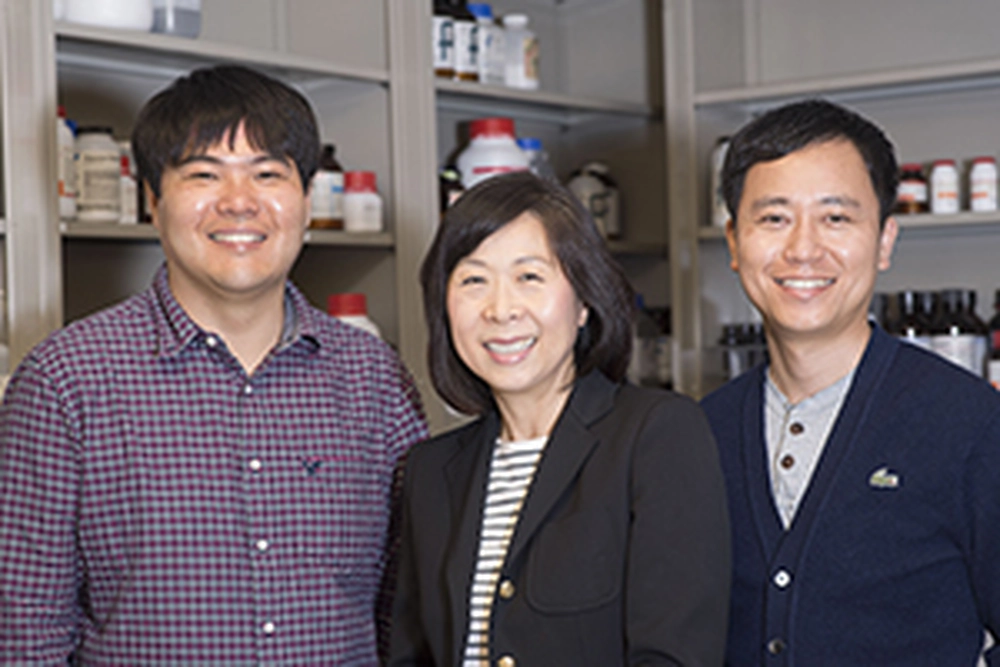
Professor of Molecular and Integrative Physiology, Jongsook Kim Kemper and the first and co-corresponding author, Young Kim, co-author Sangwon Byun, and colleagues demonstrated that Aromatic Hydrocarbon Receptor (AHR) and the orphan nuclear receptor, Small Heterodimer Partner (SHP), have an unexpected function in regulating one carbon (1C) metabolism in the fed-state. Dysregulation of the 1C metabolism by the AHR-SHP axis leads to metabolic problems like fatty liver disease.
The one carbon (1C) cycle plays a critical role in cellular metabolism by providing one carbon groups in the biosynthesis of cellular molecules which support many critical cellular functions, including biosynthesis of lipids, nucleic acids, and proteins, and epigenetic maintenance. These 1C metabolite levels must be tightly regulated, because abnormal levels have been implicated in many human diseases, including cancer, neuro disease, and metabolic disorders. In particular for this study, phosphatidylcholine (PC), produced from phosphatidylethanolamine by methyl transfer from S-adenosylmethionine (SAM) is a major component of the cell membrane and also a key determinant of hepatic lipid levels. Either too much or too little PC leads to fatty liver. Despite its importance, how the PC and SAM levels in the 1C cycle is regulated and what physiological regulators control one carbon metabolism are largely unknown.
In this study, Prof. Kemper and colleagues show unexpected findings that aromatic hydrocarbon receptor (AHR), also known as dioxin receptor, and an orphan nuclear receptor, Small Heterodimer Partner (SHP), are in vivo transcriptional regulators of the 1C cycle. Early after feeding, insulin/protein kinase B signaling mediates translocation of AHR into the nucleus where AHR induces the expression of 1C cycle genes, resulting in the synthesis of PC and SAM. A mechanism is needed to turn off this induction late after feeding when it is no longer needed. Interestingly, in the late-fed state, a hormone, Fibroblast Growth Receptor-15 (FGF15), activates SHP to block the AHR induction, thereby providing the needed mechanism. Further, this AHR-SHP axis regulating hepatic PC and SAM levels is a critical determinant of hepatic lipid levels and is defective in fatty livers of obese mice and also in non-alcoholic fatty liver disease (NAFLD) patients. The AHR-SHP regulatory axis may provide new targets for treatment of NAFLD and other 1C cycle-related diseases, including cancer.
The study was supported by grants from the National Institutes of Health, and a Basic Science Award from the American Diabetes Association to Professor Kemper. The American Heart Association supported Dr. Young Kim with a Scientist Development Award and Dr. Sangwon Byun with a Post-Doctoral Fellowship.
